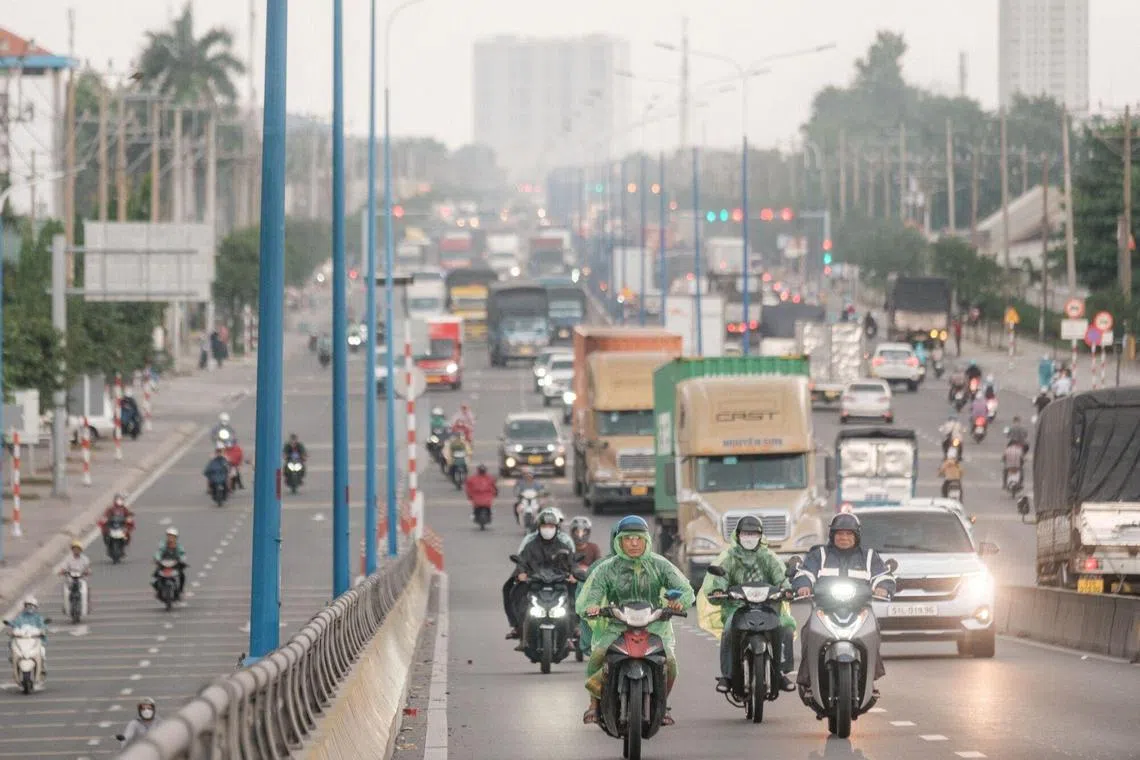Vietnam surprised by Trump tariff announcement, seeks lower rate
Sign up now: Get ST's newsletters delivered to your inbox

Vietnam had been pushing for a tariff in the 10 per cent to 15 per cent range.
PHOTO: BLOOMBERG
Follow topic:
Vietnam’s leadership was caught off guard by US President Donald Trump’s announcement last week that it agreed to a 20 per cent tariff, and the South-east Asian nation is still seeking to lower the rate, according to people familiar with the matter.
Straight after the July 3 call with Mr Trump, Communist Party of Vietnam chief To Lam told his negotiating team to keep working to bring the tariff rate down, the people said, asking not to be identified, as the talks are confidential. The 20 per cent figure came as a surprise, as Vietnam believed it had secured a more favourable tariff range, the people said.
Before the call, Vietnam had been pushing for a tariff in the 10 per cent to 15 per cent range.
There has been little mention of the 20 per cent tariff in Vietnam’s state media. In a government memo seen by Bloomberg News, which was sent to the local press, instructions were given not to post content that is unclear or speculative in nature and without consensus between Vietnam and the US.
Vietnam’s Ministry of Foreign Affairs did not immediately respond to a request for comment.
The South-east Asian nation, an export powerhouse that in 2024 had the world’s third-biggest trade surplus with the US, was only the second country after Britain that Mr Trump has announced a trade agreement with. Mr Trump has been issuing tariff letters to dozens of trading partners since then, slapping on duties as high as 50 per cent ahead of an Aug 1 deadline.
The day after Mr Trump’s Truth Social post on Vietnam, in which he called Mr Lam “an absolute pleasure” to deal with, the country’s Ministry of Foreign Affairs said trade negotiators were still coordinating with their US counterparts to finalise the details of the agreement.
Since then, Vietnam’s leaders have skirted the issue in official comments. Prime Minister Pham Minh Chinh instead focused on Vietnam’s efforts to diversify export markets and supply chains to adapt to the new tariff policy and his comments were echoed a few days later by a deputy trade minister.
Mr Trump’s announced rate of 20 per cent would replace the current 10 per cent baseline but still add on to some other pre-existing levies such as “Most Favoured Nation” tariffs, according to a US official who requested anonymity to discuss the matter. That would push the typical total average effective rate above 20 per cent. US sectoral tariffs, such as on cars and steel, are separate from the 20 per cent rate but not cumulative; importers pay one or the other.
The White House did not immediately respond to a request for comment sent outside of normal business hours.
Vietnam is trying to navigate Washington’s demands while keeping good relations with China, its biggest trading partner. Throughout the negotiations, the US demanded more action from Hanoi to prevent Chinese goods being rerouted and repackaged through Vietnam to skirt higher tariffs. Beijing said it was examining the trade agreement and would retaliate if its interests were hurt.
In parallel with the push for a lower rate, Vietnam’s trade ministry is holding meetings with Customs and trade industry groups on regulatory steps to further tighten the rules around origin-of-goods fraud and prevent illegal transshipments, the people said.
More than a week after it was first revealed by Mr Trump, neither side has published any kind of detailed outline, providing little clarity on how the 20 per cent rate or the 40 per cent levy on goods deemed to be transshipped through the country will be enacted or enforced.
On July 10, Mr Trump told NBC News he was eyeing blanket tariffs of 15 per cent to 20 per cent on most trading partners who have not been informed yet of their rates. The current global baseline minimum levy for nearly all US trading partners is 10 per cent.
The confusion has not deterred investors. Stocks rallied to a three-year high and the 20 per cent tariff was interpreted by foreign investors as “a good deal for Vietnam”, said one leading fund manager at an investment summit in Hanoi on July 9.
While in Brazil for the Brics summit, Mr Chinh and China’s Premier Li Qiang agreed to boost economic, trade and investment ties between the two countries during a meeting on the sidelines. They also agreed to prioritise the construction of a railway link connecting the two countries, one of many signs of closer cooperation between the two neighbours underscoring Vietnam’s need to keep Beijing on side. BLOOMBERG

